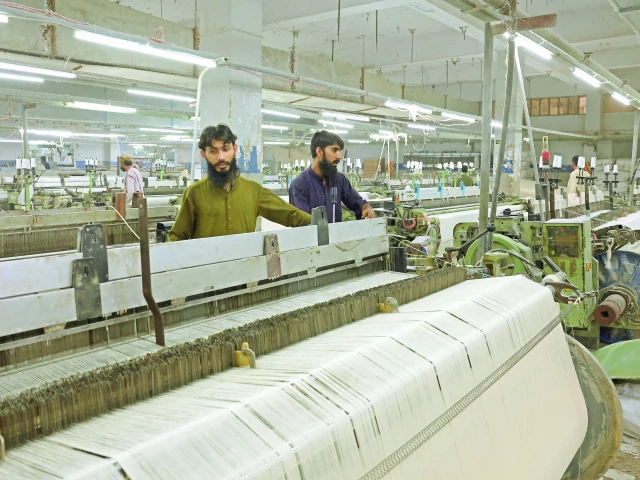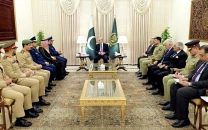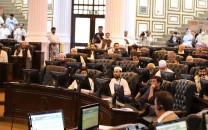US tariff to hit Pakistan textile industry hard
Leather, surgical instruments, rice, cement, steel products, salt, are bracing for impact

Pakistan, which had considered itself unharmed by the US tariff war, based its outlook on the fact that US President Donald Trump's previous tariffs had not targeted Pakistan, has now been caught off guard by the US's 29% tariff. This will significantly impact its export sector, particularly the already stagnant textile industry. The result will be a severe blow to exports, foreign reserves, and employment, further exacerbating the country's economic challenges.
The country had even considered inviting Chinese factories to relocate in order to avoid the tariffs imposed on China. However, this effort failed in the past due to an unfriendly business environment and political instability caused by the ongoing power struggle between politicians and the establishment.
The United States has imposed reciprocal tariffs on its trading partners, including Pakistan, to boost domestic manufacturing and generate revenue. These tariffs range from 10-48%, in addition to a universal 10% tariff applied to all countries.
In 2024, US imports totalled $3.36 trillion, reflecting a 6% year-on-year (YoY) increase, according to Trade Map. Mexico was the largest contributor to US imports (15%), followed by China, Canada, Germany, and Japan, with shares ranging from 5-14%, according to Topline Securities. In contrast, Pakistan's share was a mere 0.16%, compared to Vietnam (4.2%), Bangladesh (0.26%), Sri Lanka (0.09%), and India (2.7%). Despite its small share in US imports, the US remains Pakistan's single largest export destination, accounting for $6 billion annually, or 18% of Pakistan's total exports.
Textile industry faces tariff challenges
Textiles constitute 75-80% of Pakistan's exports to the US, with other exported goods including leather, surgical instruments, rice, cement, steel products, and salt. Pakistan's textile exports compete primarily with China, India, Vietnam, Cambodia, Indonesia, and Bangladesh. The imposed tariffs on textile exports vary: China (34%), Vietnam (46%), Sri Lanka (44%), and Bangladesh (37%) face higher tariffs than Pakistan (29%), while India benefits from a slightly lower tariff (26%).
Pakistan and India export similar textile products (product codes 61, 62, 63, and 52), meaning India holds a competitive advantage due to its lower tariff rate. Conversely, higher duties on Bangladesh and Vietnam provide some relief to Pakistan's textile exports. However, with higher tariffs on China, Vietnam, and Bangladesh, these countries may shift their focus to the European market, intensifying competition for Pakistan's exports in that region.
Companies affected by US tariff
Key Pakistani textile companies affected by US tariff policies include Interloop Limited (ILP), Feroz Mills (FML), Kohinoor Textile (KTML), Nishat Mills (NML), and Gul Ahmed (GATM). Outside the textile sector, companies such as Service Global Footwear (SGF), Matco Foods (MFL), Fast Cables (FCL), International Steels (ISL), International Industries (INIL), DG Khan Cement (DGKC), Power Cement (POWER), and Mitchells Fruit Farms Limited (MFFL) also have US exposure. Additionally, Pak Elektron (PAEL) has recently started exporting transformers to the US, according to Topline Se.
Trade balance, export breakdown
Pakistan's trade balance with the US remains in surplus. In FY24, Pakistan exported $5.44 billion worth of goods to the US while importing $1.88 billion, resulting in a trade surplus of $3.57 billion, according to AHL. This was a slight decline from FY23's $3.72 billion surplus due to a 6% drop in exports and an 8% reduction in imports. As of FY25 to date, the surplus stands at $2.51 billion, with exports at $4.01 billion and imports at $1.50 billion.
Textiles continue to dominate Pakistan's exports to the US, accounting for 91.9% of total exports in FY24, amounting to $5 billion. In the first eight months of FY25, textile exports totalled $3.7 billion, increasing their share to 92.8% despite an overall decline in exports. The food sector's contribution dropped slightly from 3.3% in FY24 to 3.2% in FY25, while the steel sector remained stable at around 1%. Cement exports, though minor, increased from 0.3% in FY24 to 0.5% in FY25.
Mitigation strategies for Pakistan
To mitigate the impact of the 29% US tariff hike on Pakistan's exports, particularly in the textile sector, the country needs a strategic, policy-driven response. Key strategies include negotiating reciprocal trade agreements to reduce tariffs on exports, especially textiles, and lowering duties on US imports like raw cotton to maintain competitiveness.


















COMMENTS (1)
Comments are moderated and generally will be posted if they are on-topic and not abusive.
For more information, please see our Comments FAQ